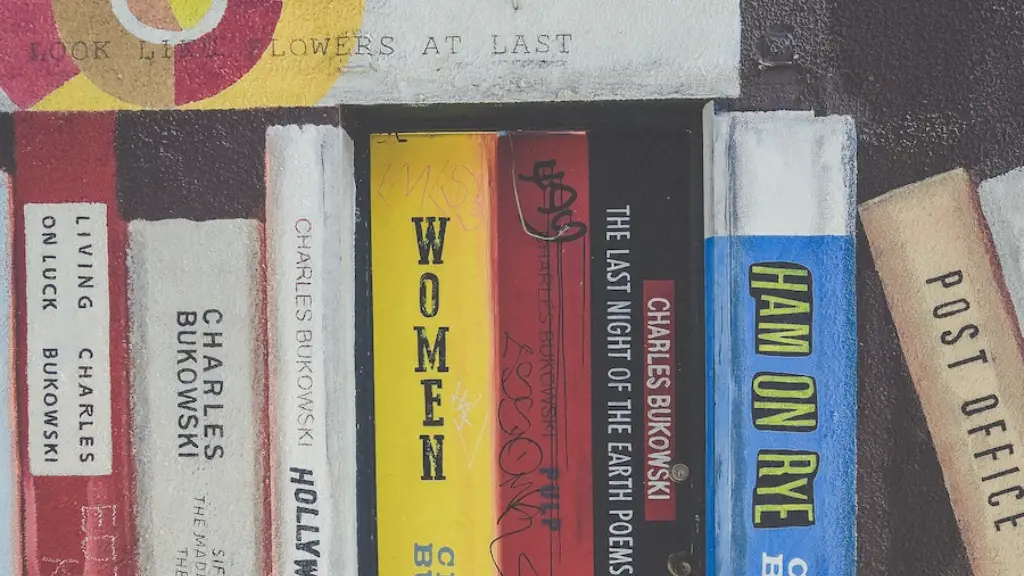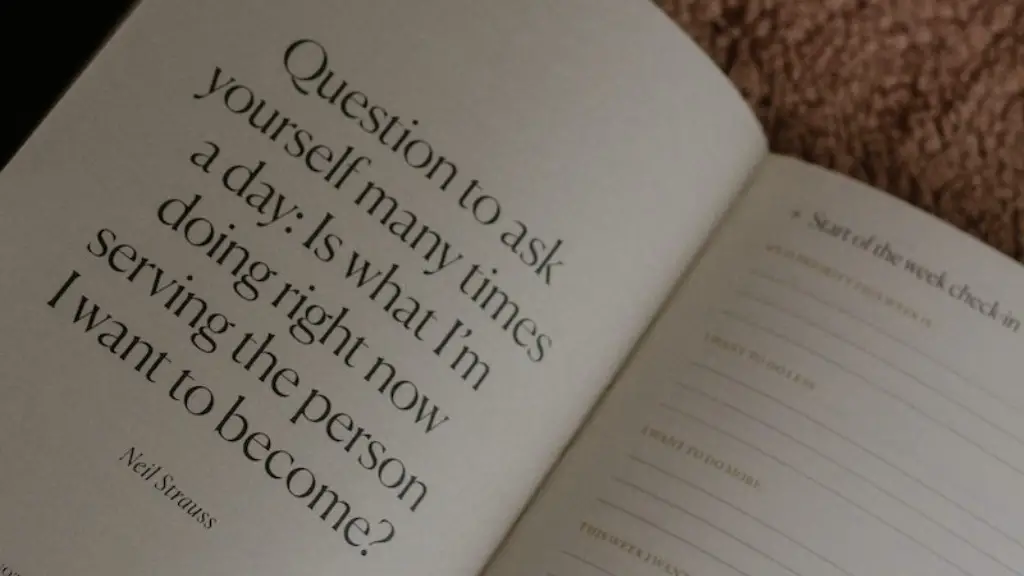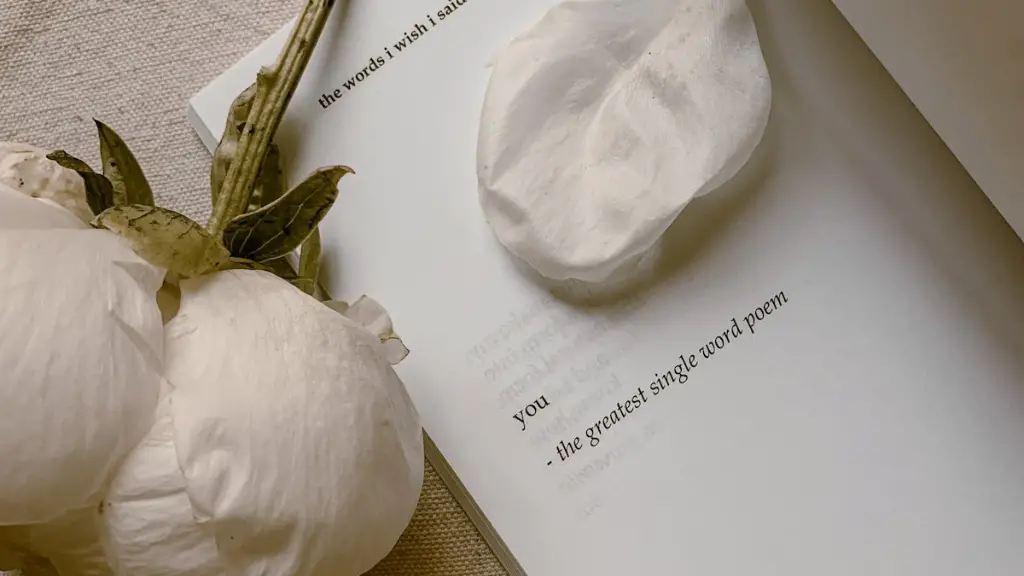Poetry has long been the way by which people can express themselves and their deepest, darkest thoughts. It has a way of connecting with people on an emotional level, as well as an educational one. For this reason, it is essential that poetry be taught in schools.
In an education context, poetry can open the minds of students to a new way of thinking. It is an art form that can engender creative, imaginative, and critical thinking skills, which are vital for success in both school and life. For example, a poem can be used to encourage students to analyze themes, characters and make connections in order to understand a piece of writing in its entirety. This can help them to better analyze other types of literature.
On an emotional level, poetry can serve as an outlet for students to express feelings, explore emotions, and build self-esteem. By being allowed to express themselves through poetry, students can gain a greater awareness of their own emotions, as well as those of others. They can further develop the skills they need to productively deal with anxiety, stress, and other issues they may encounter in life.
Additionally, teaching poetry in schools can introduce students to different cultures, customs and values. This can create a deepened understanding and appreciation of our diverse world. As a result, the students can become more tolerant of the differences among people.
Moreover, poetry can aid in introducing students to the basics of rhetoric and literature. Through the framework of poems, students can learn about various language expressions, forms and devices. Consequently, they can also gain an appreciation of the craft of writing—which is essential in any field of study.
In conclusion, not only is poetry a captivating form of art, it also has great educational value. Through poetry, students can become more aware of their thoughts and emotions, gain a deeper understanding of the world, and hone their literary skills.
Understanding the Different Forms of Poetry
An understanding of the different types of poetry can help students to better comprehend what they are studying. In its most basic form, poetry is writing or speaking in a rhythmic way. It’s characterized by rhyming words and different variations of meter, pauses, and patterns. By exploring the various types of poetry, students can gain a greater understanding of the form and its many components.
The most common form of poetry is the traditional rhyming poetry, which is structured with a set number of lines and syllables. This can help students understand and appreciate the power of words and rhythm. Other types of poetry, such as free verse and haiku, don’t necessarily need to adhere to certain structured rules, but are still very powerful and meaningful in their own right. By exploring these less traditional forms of poetry, students can be exposed to different writing styles, and can gain more confidence in their own writing skills.
In addition to rhyming poetry, there are many other forms that should be explored. Lyric poetry is a type of drama that focuses on expression and emotion. Sonnets are a structured type of poem that can provide insight into the classic forms of literature. Lyrics of songs are essentially poetry in and of themselves, and can be just as powerful and meaningful. By exploring these different forms of poetry, students can gain a better understanding of the craft.
Poetry can be a wonderfully expressive form of art when it is given the proper respect and attention. Teaching different types of poetry in schools therefore, can provide students with an opportunity to explore the various styles and forms of this craft, as well as understand its power when used in the right contexts.
Bringing Poetry to Life Through the Arts
In addition to creating and reading poetry, students can be encouraged to bring their poems to life through various genres of art. Through music, painting, dance, and theatre, students can not only discover new ways to express themselves, they can also explore their poems in more visual and interactive manners. By doing so, students can gain a better understanding of the meaning behind their words, and can discuss their poems more effectively.
One great example of using the arts to bring poetry to life is the use of music. Students can select specific songs that express the emotion and message of the poem, or they can create their own music to accompany their poems. This is a great way to help them apply their new knowledge of the craft to a different medium, while also enhancing the overall meaning of the piece.
Art can also be used in creating visual interpretations of the poem. Students can draw, paint, or build models of the poem’s world, characters, and scenes. This is an engaging and creative way for them to explore the content, themes, and symbols of the poem, as well as gain a greater understanding of their own writing.
Theatre can also play an important role in bringing poetry to life. Students can take their poems and adapt them into educational plays, skits, and monologues. This is another way for them to better engage with their material and share the themes and ideas of the poem with their classmates and teachers.
Integrating Technology in Poetry Classes
Technology has become an invaluable tool in the modern classroom, and teachers should look for ways to integrate technology into their poetry classes. Using technology can open up a whole new world of possibilities for teaching poetry. For instance, electronic databases of poetry can be used to expose students to the works of famous and lesser-known poets. This provides students with an up-to-date resource that can help to further expand their understanding of the craft.
Online tools can also play an important role in learning poetry. Word-processing tools, such as Google Docs and Microsoft Word, can help students to easily create and structure their poetry. Typing tools, such as Grammarly, can help them catch spelling, grammar and punctuation mistakes. For theatre and performance-based tasks, websites such as YouTube can be used to create and share videos of the students’ performances.
In addition to word-processing and typing tools, technology can also be beneficial in helping students learn about the different forms and styles of poetry. For example, websites such as Poetry Foundation and Poetry Out Loud contain vast libraries of different types of poetry, as well as learning resources. Teachers can use these online tools to help spread the knowledge of various poets, and to promote an understanding of the craft among their students.
Connecting With Audiences
The main goal of teaching poetry in school is to help students become more aware of their emotions and develop critical and creative thinking skills. But an additional benefit of teaching poetry in school is that it provides an avenue for students to showcase their work to wider audiences.
One way to do this is by holding in-class poetry readings. This provides students with the opportunity to share their work, practice public speaking and interact with their classmates. It can also help them to better understand how the audience interprets their work, as well as develop an appreciation for the poetry of others.
Organizing a school poetry slam is another great way to expose students to the power of poetry and to broaden their audience. A poetry slam is a competition in which poets compete to win the approval of their audience. This is an engaging and exciting way for students to showcase their work and explore the power of poetry.
In addition to in-class readings and poetry slams, teachers can also look for other ways for their students to connect with their audience. Submitting poems to online platforms, such as journals or social media accounts, can provide students with an opportunity to get their work seen and appreciated by a wider audience. As a result, their confidence in their own work can increase, and they can develop a greater appreciation for the power of poetry.
The Benefits of Teaching Poetry
Teaching poetry in school can provide many benefits. It can help students to better understand the power of words and rhythm, to become more aware of their emotions and thoughts, and to enhance their understanding of rhetoric, literature and the world. Furthermore, through the arts and technology, students can be encouraged to explore their poems more deeply and to connect with wider audiences.
Ultimately, by teaching poetry in schools, students can gain the knowledge and skills they need to evaluate, analyze, create and share poetry. This can empower them to become more aware and open-minded, as well as to become more successful in the educational realm and in their lives.





